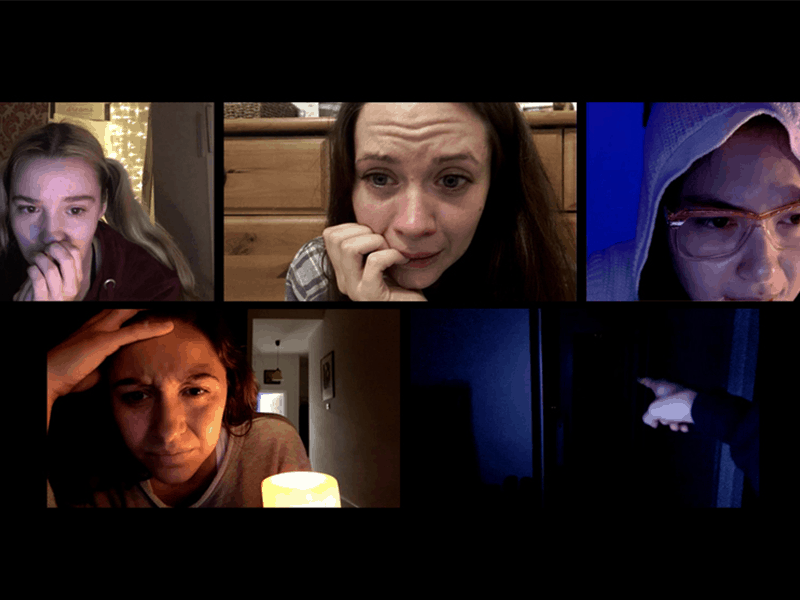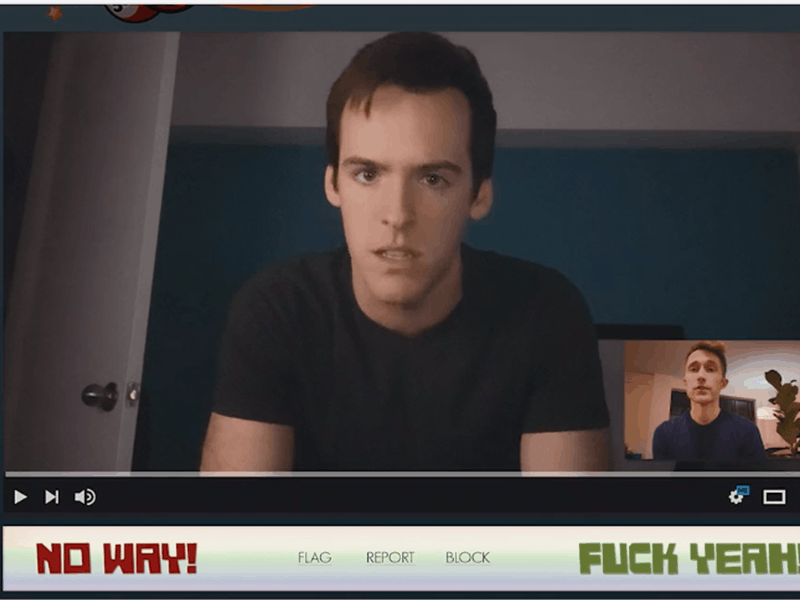[ad_1]
This article is part of our 2020 Rewind. Follow along as we explore the best and most interesting movies, shows, performances, and more released in this very strange year. In this entry, we explore how 2020 made found footage movies interesting again.
While large film productions have been halted and delayed due to COVID-19, that doesn’t mean all filmmaking has stopped. Trapped in their homes for the safety of themselves and others, horror filmmakers have let isolation breed creativity as they discover new ways to create genre filmmaking without ever having to leave their homes. Zoom becomes their studio, and high-quality footage is replaced with the grainy, low-quality images that come from recording a video call.
These films are not only creative in how they craft low budget yet effective scares that are limited to the scope of a webcam or a cellphone video. They are able to take the domestic space, the place where everyone must stay in the name of safety and health, and make it even more threatening. While the home turning sinister is a common trope in horror, these 2020 found footage movies compound that even more because there is no way to truly escape. They are either the creatures living in your home or the virus outside of your door, threatening the lives of you and the ones you love.
The best example of such filmmaking is Rob Savage’s Host, which began as a short video uploaded to Twitter. In the original video, which was a prank created and executed by Savage, he tells his friends on Zoom that he’s been hearing something in his attic. His friends, who believe it is real, are forced to follow him up a ladder, into the attic, and experience the terror of his “discovery.”
Savage’s prank video went viral and he was offered the opportunity to make it a feature, which was entirely filmed remotely. Actors were sent microphones and other necessary gear that they set up on their own; everyone on camera was a one-person production team who set up their own sound, lighting, and more. It is a collaborative process, more so than any Hollywood release, as each actor was forced to acquire new skills and invest their time and energy into not only their performances, but into set design, sound design, and more.

In any other year, his short may have flown under the radar, gaining a few dedicated fans and plenty of comparisons to films such as The Den and the Unfriended series. But within the context of 2020, the short resonated to our bones. We are all spending hours on Zoom meetings with either coworkers or loved ones. Zoom is our connection to the rest of the world. In a time when so many of us are disconnected from our support system, what is scarier than the very means of personal connection becoming tainted and deadly? In making that one tenuous connection horrifying, Savage has tapped into our current cultural fears and anxieties.
But Host is not the only piece of filmmaking this year that stretched the bounds of creativity in the pandemic. Director and writer Michael Varrati also created his own queer pandemic short, this time about trying to find love during a time when meeting in person is dangerous. Unusual Attachment was also shot entirely remotely. Unlike Host, this film had a custom-designed UI to replicate the user experience of sites like ChatRoulette. With such a detailed graphics treatment, it is even more difficult to differentiate between the cinematic world and the digital world with which we are so accustomed.

Another unexpected site of creativity and genre filmmaking is the short-form video app TikTok. Throughout the pandemic, both professional creators and amateurs with iPhones have posted their horror creations and seemingly true horror stories. Creator @shortestblockbusters started their account in April and uses the fifteen-second limit to showcase their astounding animation and CGI skills by creating horrifying monsters. On the other end of the spectrum, users such as @smitherenes, @readmybioyo, and @gabrielle.quinn posted their own seemingly real experiences with ghosts. This app embodies the idea of found footage in real-time as each TikTok user is typically discovering these videos on their own.
The beauty of TikTok is the authenticity of its content. Without obvious animation, it’s difficult to tell what is an actual supernatural occurrence or a carefully produced moment of horror. This makes these videos all the more terrifying as anything could be real — if you believe in the supernatural. With access to a video camera in our pockets and a lot of free time, anyone can create horror films, or capture what seems to be actual footage of ghosts.
Despite the poor reputation that found footage movies have received over the years, 2020 has been a testament to the power of those low budget film techniques. In the context of a tumultuous and extremely isolating year, found footage is having a resurgence. Filmmakers like Rob Savage and Michael Varrati have demonstrated the elasticity and malleability of the technique, and how it can extend into the digital space. If you hated Zoom before, you may just hate it even more now.
[ad_2]
Source link